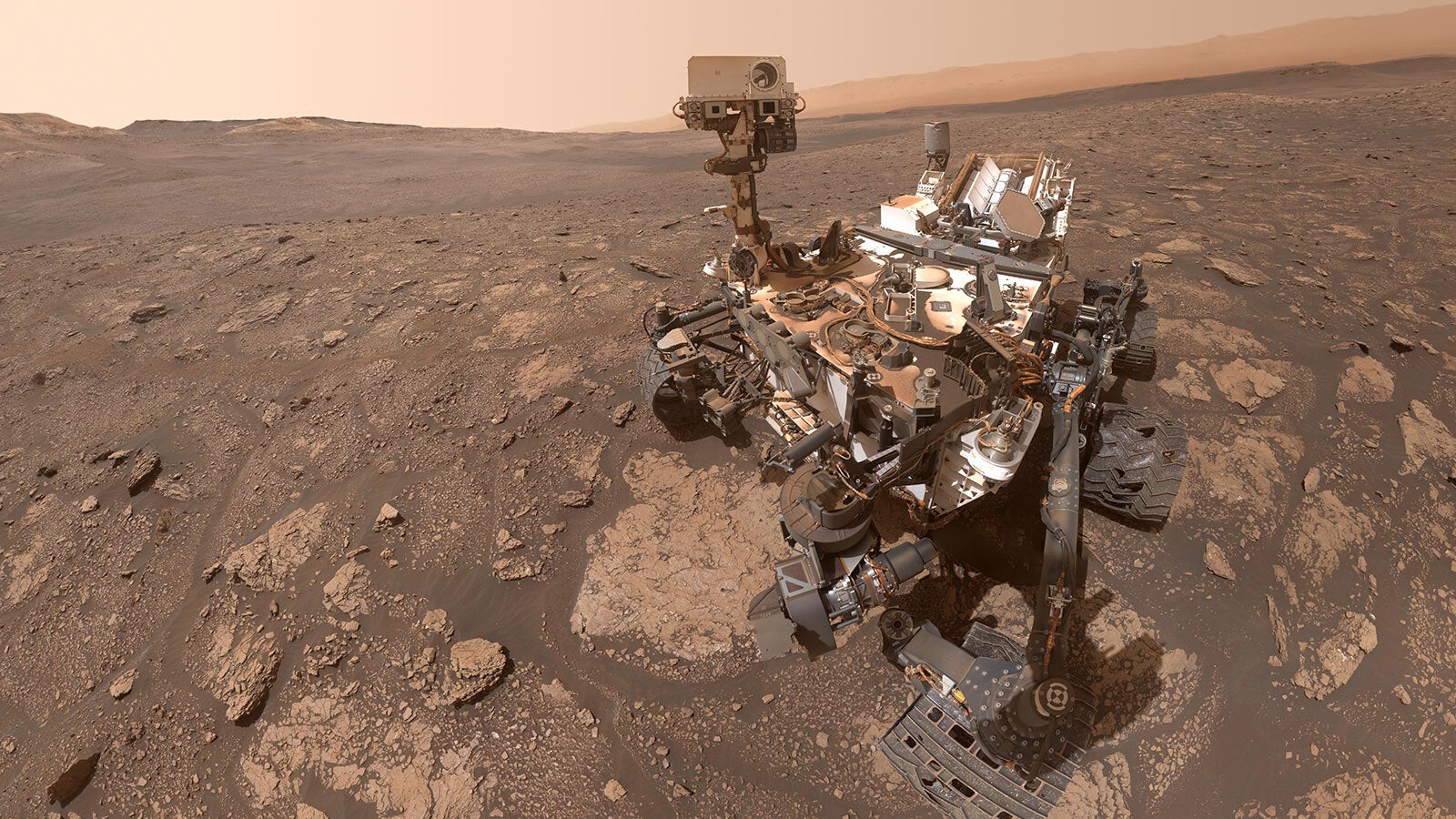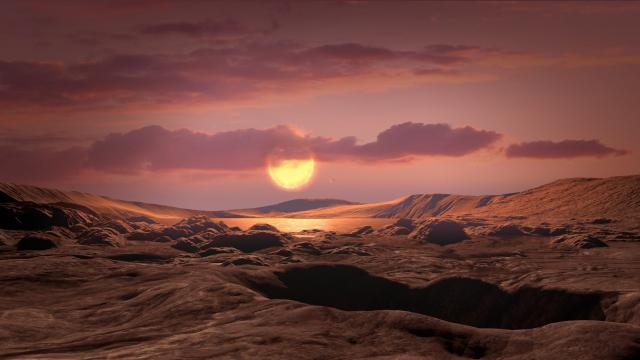Evidence of aliens might actually be an easy thing for scientists to detect — it’s proving that the evidence is legit that promises to be a greater challenge. A newly proposed framework developed by NASA scientists could help.
“Our generation could realistically be the one to discover evidence of life beyond Earth,” declares a new Perspectives paper published in Nature. “With this privileged potential comes responsibility.”
Indeed, a definitive declaration of life beyond Earth continues to elude us, but news of this magnitude would shake us to our existential foundations. So when the time comes — should it ever come — for scientists to make the big announcement, they sure as hell need to get it right. To assist in this regard, the authors of the new paper present a methodological framework that takes researchers step by step toward the finish line, and ultimately to a position from which they can confidently declare the discovery of extraterrestrial life.
The guide, called the ‘confidence of life detection’ (CoLD) scale, is long overdue, as it’s not immediately clear how scientists are supposed to prove something that’s never been proven before.
“I felt that we were floundering a little bit — that we didn’t have the rigour,” James Green, chief scientist at NASA and the first author of the new paper, explained to me over the phone. “Our new scale brings in the rigour.”
Green and his colleagues “want the scientific community to adopt the new framework, and for NASA to get fully behind it and fund research that makes progress along this scale.” Such a development, he said, will “really help us scientifically in many areas.” Astrobiologist Mary Voytek from NASA Headquarters in Washington, DC, is a co-author of the paper.

A significant problem with the current paradigm, said Green, is that people are expecting one of two answers: either alien life has been discovered or it has not. This craving for a binary yes-or-no answer, he said, isn’t realistic given the current state of our exploratory technologies. What’s required instead is for scientists to communicate their preliminary findings with each other, the public, and the press. The proposed framework will help in this regard, according to Green, as it will encourage communication and prevent scientists from “crying wolf,” as he put it. Scientists, he said, “have to be able to continue with a preponderance of information to build their story and to have more confidence to claim that there might be life on a planet.”
The seven steps outlined in the framework are designed to iteratively take astrobiologists to the top — that final level of confidence. Looking at these guidelines, it’s clear that confirmation of life beyond Earth won’t come in a single easy step and will instead involve a exhaustive, time-consuming process. But hey, that’s how science has to work sometimes, especially in cases when targets are millions of miles away.
The first rung on the CoLD ladder is the detection of a signal that’s known to result from biological activity, such as a molecule produced by life. We already have several examples of reaching CoLD level one, including claims of methane on Mars, phosphine on Venus, and as Green noted, oxygen on any celestial body. CoLD level 1 was also reached in 1996 following an analysis of a Martian meteorite known as Allan Hills 84001. A research team thought that worm-like lines on the meteorite were fossils, but these features likely formed when the rock was blasted from the Martian surface.

Getting to step one is not a huge deal — it’s moving past this preliminary stage that’s proving to be difficult. Level two requires that contamination be ruled out, in addition to ruling out faulty instrumentation and the misinterpretation of data. The apparent discovery of phosphine on Venus — a chemical that can usually only be produced by life — never got past this stage, for those very reasons.
Step three requires scientists to prove that the signal is capable of originating from its environment. This can be done by referencing similar environments, such as an ancient lakebed on Earth (to mimic conditions on Mars) or hydrothermal vents along the seafloor (to mimic conditions on Saturn’s moon Enceladus or Jupiter’s moon Europa). A strong case can be made that the effort to prove the existence of life on Mars has attained this third CoLD stage; remote observations of methane on Mars — a potential sign of life — were confirmed by on-the-ground observations made by NASA’s Curiosity rover.
The next set of stages present formidable but coherent challenges. For the signal in question, astrobiologists must rule out non-biological sources, acquire additional and independent observations, and eliminate alternative hypotheses. Remote sensing equipment can get scientists to the first and second levels, “but we have to be able to bring in additional information” and “get the required context,” said Green, adding that the “CoLD scale is meant to do that.”

The quest to prove the existence of life on Mars is currently stuck at level three, as scientists have yet to prove that methane is being produced by non-biological sources. The good news is that this can be done, albeit in theory. Scientists need to collect sufficient amounts of methane on Mars to run an isotopic analysis, showing whether methane is being produced by abiotic or biotic processes.
The seventh and final stage will require “independent, follow-up observations of predicted biological behaviour in the environment,” according to the paper. That last step is a kind of “proof is in the pudding” requirement, and it could be a big ask depending on the venue; confirming the presence of biology on Mars or Enceladus is one thing (as objects inside the solar system are within the range of satellites and probes), but confirming biology on an exoplanet parked many light-years from Earth represents an entirely different proposition.
Green presented a hypothetical scenario in which astrobiologists could plausibly reach CoLD level seven on Mars. He imagines a successor aircraft to the Ingenuity helicopter — one capable of detecting methane leaking up from a source beneath the surface. Follow-up observations of the same spot would reveal a hidden aquifer, leading to a drilling mission, which would in turn reach into the water and pull up actual samples of life. Bingo: CoLD level seven reached, at least according to this fictional scenario.
The guidelines proposed by Green and his colleagues are tough but sensible. This roadmap can be used confirm life in multiple contexts and to confirm life as we do not know it — such as life that doesn’t require water to survive. As Green explained, life to be defined as such needs to metabolize, reproduce, and evolve. If it can do all of these things, “we will call that life,” he said.
The next step, in addition to refining the scale, is to get community buy-in. Not all scientists will want to share their findings with others or be beholden to the proposed framework, but Green says that if researchers hope to get NASA funding for a project, they might have to abide by the new rules.
“I want scientists who get NASA money to do their own evaluation and determine which CoLD index they’re at,” he told me. “So when you or I read their paper and see, say a CoLD 4 or CoLD 5, we’ll know how much progress they’ve made,” he said. Importantly, we’ll also know how much work still needs to be done. That way, the scientists can “focus on what the next steps need to be,” said Green.
More: The Most Promising Signal of Alien Intelligence Just Went Bust.
